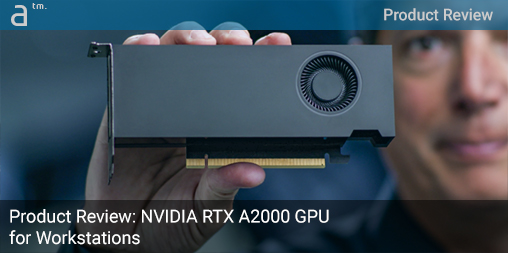In real-world apps, the NVIDIA RTX A2000 offered excellent performance. For the zillions of architects and designers out there working in SketchUp and pairing that app to real-time rendering solutions like Enscape and Twinmotion, the A2000’s ability to fit into Small Form Factor (SFF) workstations is a huge benefit for the GPU.
We also like the RTX A2000’s tessellation scores. For surface and solids modeling in CAID and MCAD workflows, the tiny GPU offers excellent performance, almost matching a Quadro RTX 4000 in OpenGL tessellation performance. The VRMark score demonstrates that despite its tiny size, the RTX A2000 can power most VR headsets. For those interested in Varjo’s industrial-grade VR-3 / XR-3 headsets, and above, the NVIDIA RTX A2000
doesn’t quite fit the bill. NVIDIA’s new RTX A2000 isn’t aimed at the high-end market where Varjo’s gear plays.
For V-Ray users, the RTX A2000 generates 1.8 – 2.1 Vrays per USD, compared to 1.95 Vrays per USD for the RTX 3070. On the OpenGL tessellation level, the RTX A2000 is an even better value performer. The variability in the 1.8 – 2.1 Vrays measure depends on if users can grab an A2000 for USD 450 or the USD 525 we saw online. Sometimes folks automatically think that getting the least expensive option among a selection of options means you get less dollar value. In this particular case, the A2000 delivers excellent value.
Costs: 450 USD MSRP

